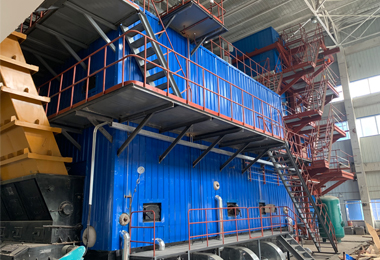
Aug . 15, 2024 09:32 Back to list
Understanding the Operation and Efficiency of Thermic Fluid Boilers in Industrial Applications
The Working Principle of Thermic Fluid Boilers
Thermic fluid boilers, also known as thermal oil heaters, are essential components in various industrial applications where precise temperature control is crucial. These boilers operate by using a heat transfer fluid (HTF), typically synthetic oils or organic fluids, to transfer heat from combustion to process applications. Unlike traditional steam boilers, thermic fluid boilers offer higher efficiency and flexibility, making them ideal for processes requiring elevated temperatures without high-pressure steam.
How Thermic Fluid Boilers Work
The fundamental working principle of a thermic fluid boiler revolves around heating a liquid and utilizing it as a medium for heat transfer
. The system comprises several key components, including a combustion chamber, circulation pump, heat exchanger, and the thermal fluid itself.1. Combustion Process The process starts in the combustion chamber, where the fuel, such as natural gas, oil, or solid fuels, is burned to generate heat. The design of the combustion chamber allows for efficient burning, minimizing emissions and maximizing thermal efficiency. The heat generated from combustion is absorbed by the thermal fluid circulating through the system.
2. Heat Transfer The thermal fluid, which can operate at temperatures ranging from 150°C to 400°C, is heated by the hot gases in the boiler. This fluid is called high-temperature heat transfer fluid (HTF) and is chosen for its thermal stability and low vapor pressure at high temperatures. As the thermal fluid is heated, it is then circulated through the system using a pump.
3. Circulation System The circulation pump plays a crucial role in moving the heated thermal fluid to various parts of the plant. The flow can be designed in either a forced circulation or a natural circulation manner, depending on the system’s configuration and requirements. The forced circulation ensures uniform heating in various applications while preventing overheating and degradation of the thermal fluid.
thermic fluid boiler working

4. Heat Application The heated thermal fluid is then directed to heat exchangers, where it transfers heat to the process fluids or directly to the production equipment. This could involve space heating, heating of oil in reactors, or heating fluids in various manufacturing processes. The ability to maintain a consistent and controlled temperature is vital in applications such as plastic production, chemical processing, and food manufacturing.
5. Temperature Control One of the significant advantages of thermic fluid boilers is their ability to control fluid temperature accurately. Advanced control systems monitor the temperature and flow rates, allowing operators to adjust parameters in real-time to meet specific process requirements. This level of control enhances both safety and efficiency.
Benefits of Thermic Fluid Boilers
Thermic fluid boilers offer several advantages over traditional steam boilers, including
- High Efficiency They operate at lower temperatures and pressures, which results in lower heat losses and higher efficiency. - Safety The low pressure of thermic fluids reduces the risk of catastrophic failures typical of high-pressure steam systems. - Versatility They can accommodate various heat requirements, whether for short or continuous processes. - Environmentally Friendly Modern designs achieve lower emissions, making them a greener choice for many industries.
In conclusion, thermic fluid boilers play a vital role in modern industrial heating applications. By enabling efficient heat transfer and precise temperature control, they support a wide range of processes essential for manufacturing and production. Their increasing adoption speaks to the ongoing need for efficient and sustainable heating solutions in today’s industrial landscape.
-
High-Efficiency Commercial Oil Fired Steam Boiler for Industry
NewsJul.30,2025
-
High-Efficiency Biomass Fired Thermal Oil Boiler Solutions
NewsJul.30,2025
-
High Efficiency Gas Fired Thermal Oil Boiler for Industrial Heating
NewsJul.29,2025
-
High-Efficiency Gas Fired Hot Water Boiler for Sale – Reliable & Affordable
NewsJul.29,2025
-
High Efficiency Biomass Fired Hot Water Boiler for Industrial and Commercial Use
NewsJul.29,2025
-
High-Efficiency Biomass Fired Hot Water Boiler for Industrial Use
NewsJul.28,2025
Related PRODUCTS






















